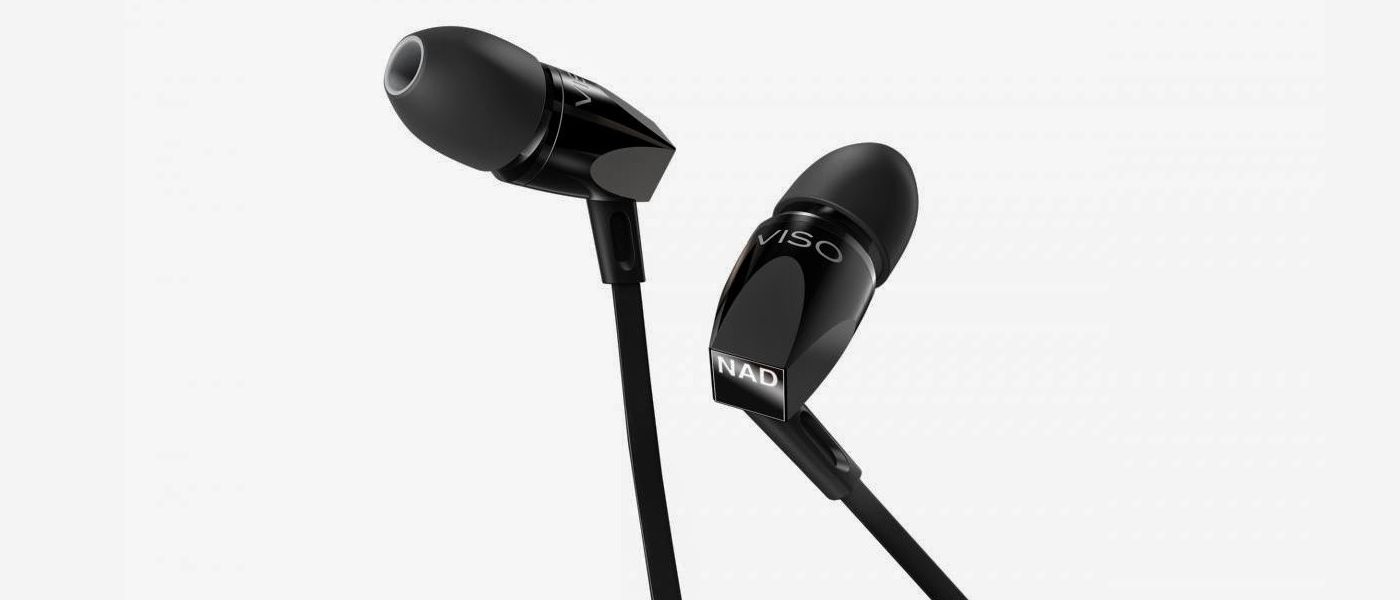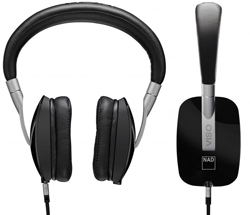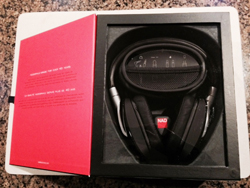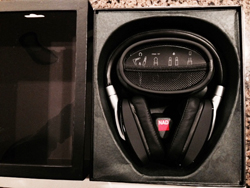Introduction to the NAD HP50 Viso Over-the-Ear Headphones
The NAD HP50 is the latest headphone design from Paul Barton, founder of PSB, a sister company of NAD, and features a new trademarked concept called RoomFeel. RoomFeel attempts to recreate the sound of listening to high-end speakers in a room. Most listening rooms add a low frequency bump to the sound that is often not taken into account when designing headphones. A room gain compensation transfer function was developed to add a +3 dB per octave boost from 200Hz down to 50Hz in order to replicate the fuller, warmer sound of a room. Clearly a lot of time and engineering has gone into the development of these headphones, the only question is, did it pay off? Yes it most certainly did.
NAD HP50 VISO OVER-THE-EAR HEADPHONES SPECIFICATIONS
- Drivers: 40 mm Dynamic
- MSRP: $299 USD
- NAD
- SECRETS Tags: NAD, Headphones, Audio, Viso
Design of the NAD HP50 Viso Over-the-Ear Headphones
Before I get into the RoomFeel sound of the HP50, let me just say that the build quality of the HP50 is very good for its price range. The glossy black finish has a classy look and the silver accents create a nice contrasting element to the design. The HP50 headphones are not too heavy, but at the same time don’t feel delicate. I have been carrying them back and forth from home and work and am confident they can withstand some travel abuse.
For comfort, the ear pieces swivel and rotate in order to properly seat around your ears. The cups are just large enough so that the padding sits around the ears, depending on ear size of course, and never presses your ears against your head. There isn’t a ton of padding on the ear cups, but it feels like a type of memory foam and does its job well. The headband has similar foam padding that allows for gentle resting on one’s noggin. The fit is snug, but I was still able to listen to them for extended periods without fatigue. The flat ribbon cable is on the verge of being too short in my opinion, but it does resist tangling. The headphones can be plugged in via the input on either left or right ears. The single sided cable allows for more freedom of movement over a ‘Y’ split cable feeding both ears. Also included is a secondary cable with in-line iOS device controls, ¼ inch adapter, and dual 1/8 inch airplane adapter.
I went with a more practical setup that the majority of people would probably use if they bought the NAD HP50’s. I either listened to them directly off my iPhone 5, or via my PC with a Meridian Explorer USB DAC.
Overall, I found the HP50’s to have a full and soothing sound quality to them. The high-end frequencies roll off a bit, sacrificing some detail, but allow for what I can only call, a pleasant sound. No matter what type of music or terrible recording I threw at the HP50’s they never made me cringe. Since RoomFeel is purely a term for how the HP50’s are voiced, there is no on off switch to enable or disable it. I can really only comment on the sound of the HP50’s and not the RoomFeel algorithm itself. With that said, the lower octaves certainly had a velvety warmth to them.
Film scores from the great John Williams sounded live and energetic. The Superman fanfare had depth to the soundstage and plenty of dynamics to that triumphant brass melody. Bon Iver’s atomospheric album Blood Bank had an airy presence with good soundstage depth for a closed back design in this price range. You won’t get the same depth or clarity of a planar magnetic design, but you do get a lighter, easy to drive headphone in exchange. It is all about tradeoffs and the NAD HP50 just happens to be more practical for most people.
Bass on the HP50’s is firm, punchy, and plentiful for most tastes. On Daft Punk’s “One More Time” the bass had punch and enough depth to get your groove on. All the while, the processed lyrics and drum machines were crisp but not irritating. The same went for Ellie Goulding’s “Anything Could Happen” where the strong bass beat held the song’s foundation and the heavily electronic lyrics and instrumentals really showed off the HP50’s ability to play loud and clear. For me the HP50’s had plenty of good quality bass and that RoomFeel boost in lower octaves never sounded like the Super Mega Ultra Bass Boost of 90’s CD players. The only thing present was a full, warm, and clear low end.
“So What” on the iconic Kind of Blue album by Miles Davis is a must listen for me on every piece of review gear. The HP50’s handled it with the love and care it deserves. While they don’t have the most depth, or dimensionality, the overall tonal balance is terrific and leads to an incredibly enjoyable sound. The saxes were lively and energetic while the percussion sounded snappy and uncompressed. The bass line sounded natural and balanced with a flat response through the octaves.
Conclusions and Rating of the NAD HP50 Viso Over-the-Ear Headphones
In this category of entry level audiophile headphones I look for several key components. First is a balanced sound, second is comfort, and third is value. We all like to find that product that presents a great value and makes you feel like you are getting something more for your dollar. The NAD HP50 is one of those products. You get a lightweight, comfortable around the ear fit for all day listening, along with a polished sound that is oh so easy to enjoy. Paul Barton has created a headphone that is insanely easy to listen to, no matter what your music tastes. The NAD HP50 will be one of my first suggestions to people looking for a better sounding headphone. A headphone that appreciates the music it is recreating.







